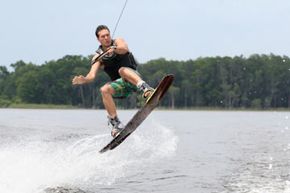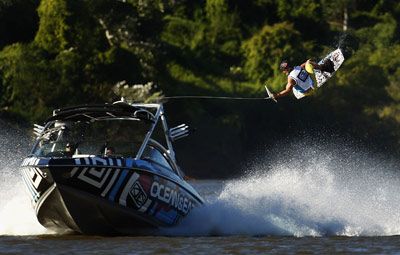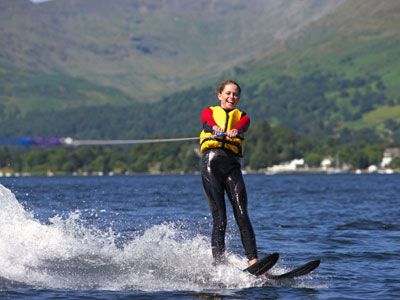Wakeboarding is to waterskiing as snowboarding is to snow skiing, and it has been one of the fastest growing recreational sports in the U.S. since it first came to prominence in the 1980s [source: USA Waterski]. The wakeboard rider, who holds a rope apparatus as he is tugged along by a speeding boat on a relatively calm lake, bay or gorge, takes a sideways, profile stance and surfs the tumultuous white waves -- or "wake" -- stirred up by the boat as it cruises along. The wakeboarder then takes advantage of the boat's speed to get lift, allowing him to become airborne and jump, twist or turn.
If you can swim, you can probably try wakeboarding, and you might even find it easy compared to some other water sports. While wakeboarding is similar to waterskiing in that the rider crests boat-generated waves, it differs in that the wakeboard offers more physical stability, because both of the rider's feet are affixed to one shared object. This can make it easier to attempt some of those dazzling (and very fun) twists, turns and jumps -- if you have the right board.
Advertisement
Wakeboards, of course, are very different from the equipment you use to water ski. However, past waterskiing experience can be an important factor to consider when choosing a wakeboard, as are your body type and size. In this article, you'll learn how to take all of these details into account and find a board that suits you. This will keep you safe and make learning easier, so you can get to the fun tricks that much sooner.
There are hundreds of wakeboards on the market, with countless options in terms of length and width -- not to mention the variety available in other board features, including fins and rocker. But the first things you should look at, even before the board, are the bindings that will hold you to your board. Read on to find out why these are so important.
Advertisement


